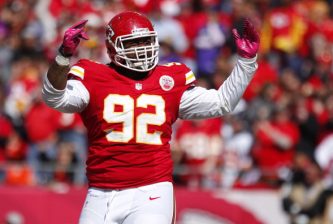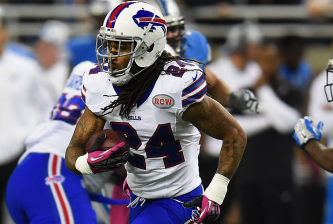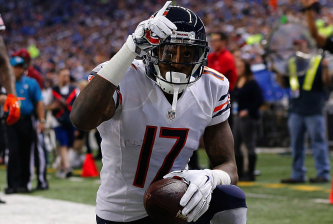We hear the word “project” attached to quarterbacks often during the NFL draft. It’s usually used as a springboard for day dreaming. Potential is there, but only after the project is complete.
Typically that word doesn’t surface until Day 3, the marathon Saturday when quarterbacks with both promise and flaws are scattered throughout four rounds. Which is actually the second reason why the Denver Broncos trading up and calling Paxton Lynch’s name at No. 26 Thursday was strange.
Let’s never lose sight of the first bit of oddness from the Broncos: The defending Super Bowl champions used their first-round pick on a quarterback.
That’s not how Lombardi Trophy raising is supposed to work. Or at least it’s not the standard team-building blueprint in this age when you either have a franchise quarterback, or you’re an unemployed general manager eventually.
The Broncos, however, didn’t win the Super Bowl with any sort of normal approach. They won with a swarming defense that allowed a league low 283.1 yards per game, and relentlessly pressured opposing quarterbacks to record 52 sacks.
Which is why they won a title even while navigating Peyton Manning’s mediocre play. And why general manager John Elway felt confident sticking to a rigid dollar figure in his negotiations with Brock Osweiler, avoiding an overpayment as the free agent took $72 million to sign with the Houston Texas.
Elway waited to address his looming quarterback question, knowing that despite a few key free agency losses—namely, linebacker Danny Trevathan and defensive end Malik Jackson—his defense could still prop up a substandard passer. Mark Sanchez, who was acquired from the Philadelphia Eagles, has enough experience to be reasonably competent, and a bridge to better days ahead with Lynch.
That’s how the Broncos’ quarterback depth chart should now play out now. Lynch is oozing with potential, and has a classic quarterback body that makes scouts scribble feverishly. He’s 6’7″ and regularly demonstrated the athleticism at that size and pocket sense to be effective as a scrambler. Over three years at Memphis he ran for 687 yards with 17 rushing touchdowns.
But he came from a spread offense that rarely asked him to take a five- or seven step drop. And lining up under center is almost completely foreign. That’s a familiar tale we hear every April: The spread quarterback needs to adapt at the next level, and his new team needs him to do it fast.
This time, though, only half of that sentence is true for the Broncos.
A team that won 12 games and a championship while Manning threw 17 regular-season interceptions can be patient. They can wait and coax Lynch along in his development, easing him in until he’s comfortable and ready.
Maybe that point comes at midseason in 2016, or maybe Denver will have to wait until 2017. It doesn’t matter, because now a franchise still polishing Super Bowl rings has both a quarterback they believe can mature into a cornerstone, and a temporary safety net provided by Sanchez.
Elway found a solution in Lynch that seemed to elude him all offseason, starting with losing Osweiler, and then having Colin Kaepernick trade talks fall through. Now his team is set at the most important position, as long as Sanchez doesn’t face plant (possible!), and Lynch doesn’t bust (also possible?).




